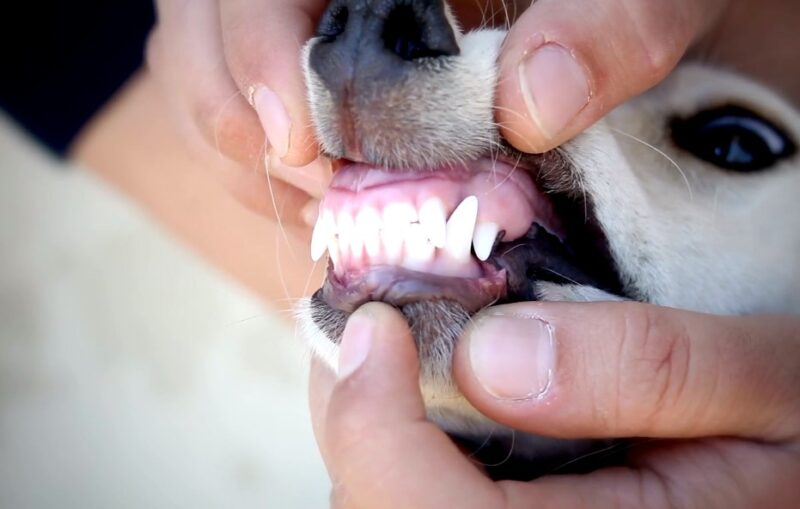Many people tend to neglect the dental health of their dogs. However, dogs, like humans, can suffer from various dental problems, and one common issue is the buildup of tartar.
To understand the seriousness of this problem and the problems it can lead to, we need to examine its causes, how it forms, and the consequences it can have.
Tartar and Its Implications
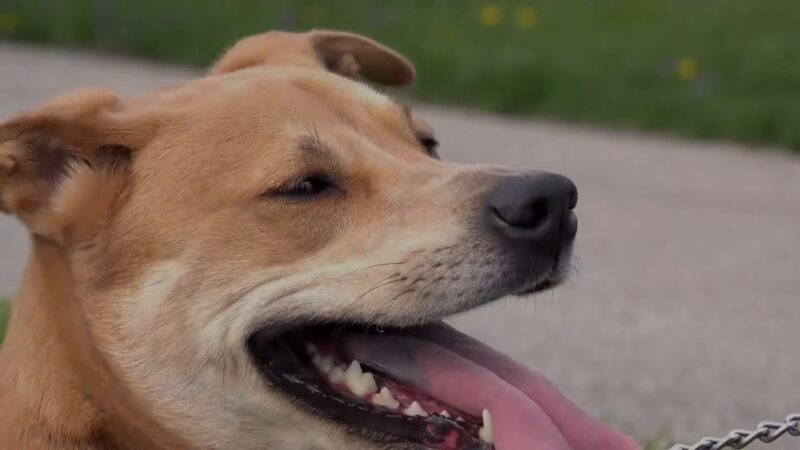
Every time your dog eats, drinks, or even explores with its mouth, it introduces bacteria into its oral environment. These bacteria, combined with saliva and food particles, form a sticky film on the teeth known as plaque.
While seemingly harmless at first, plaque is the precursor to the much-feared tartar. If plaque isn’t removed promptly—typically through brushing or chewing—it undergoes a calcification process.
This process hardens the plaque, transforming it into tartar. Unlike plaque, which can be easily brushed away, tartar firmly adheres to the tooth enamel and often requires professional intervention to remove.
The Domino Effect
- Gum Disease (Periodontitis): Tartar buildup at the gumline can lead to inflammation, causing the gums to become red, swollen, and bleed easily. If left untreated, this inflammation can cause the gums to recede, creating pockets where more bacteria can thrive, exacerbating the problem.
- Tooth Decay: Tartar provides a conducive environment for bacteria to multiply. These bacteria produce acids that can erode the tooth enamel, leading to cavities. Over time, this decay can compromise the entire tooth, leading to potential tooth loss.
- Bad Breath (Halitosis): One of the earliest signs of tartar buildup is bad breath. While occasional bad breath can result from something your dog ate, persistent bad breath is often indicative of underlying dental issues, with tartar being a prime suspect.
- Pain and Discomfort: As tartar progresses and dental issues arise, your dog may experience pain or discomfort, especially when eating or playing with chew toys. This discomfort can lead to a loss of appetite or a reluctance to play.
- Loose Teeth: As gum disease advances and the supporting structures of the teeth are compromised, teeth can become loose. This not only affects your dog’s ability to chew but can also lead to infections if bacteria enter the bloodstream through the oral cavity.
- Infection and Systemic Issues: The mouth is a gateway to the rest of the body. Bacteria from tartar and infected gums can enter the bloodstream, potentially affecting vital organs like the heart, liver, and kidneys. This underscores the importance of addressing dental issues promptly.
Prevention is Better Than Cure
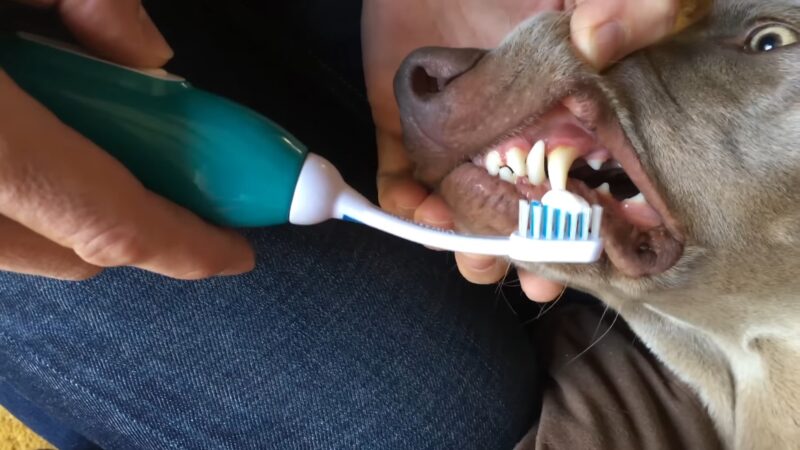
A dog’s dental health is a reflection of its overall well-being. Just as with humans, neglecting dental hygiene can lead to a plethora of health issues, both within the mouth and throughout the body.
However, with a proactive approach, many of these issues can be prevented. Let’s delve into the various preventive measures that can ensure your furry friend’s teeth remain in tip-top condition.
1. Regular Brushing
- Why It’s Important: Brushing removes the daily accumulation of plaque, preventing it from hardening into tartar. It’s the most direct way to combat potential dental issues.
- How to Do It: Using a soft-bristled toothbrush designed for dogs, along with dog-safe toothpaste, gently brush your dog’s teeth in a circular motion. Focus on the gum line, where tartar tends to accumulate. Remember, human toothpaste can be toxic to dogs, so always opt for a canine-friendly variant.
- Added Benefit: The act of brushing also massages the gums, which can improve blood circulation and overall gum health.
2. Dental Chews
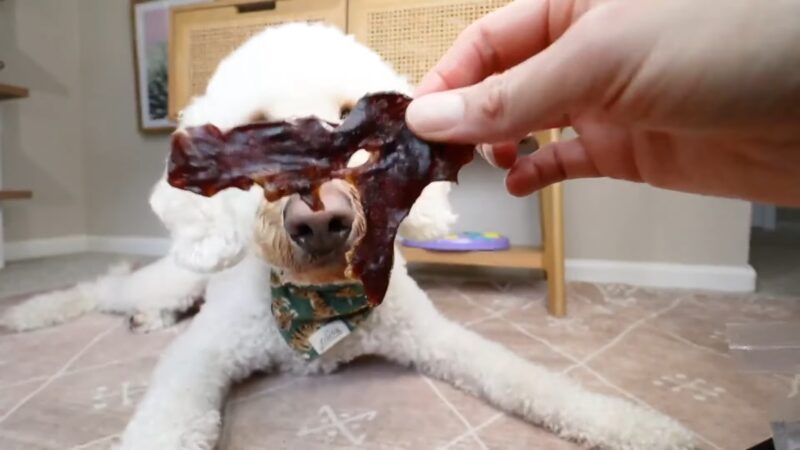
- Why They’re Beneficial: Dental chews are designed to be abrasive, helping to scrape away plaque as your dog chews on them.
- Choosing the Right Chew: Materials like bones or antlers are hard and can effectively combat plaque. However, ensure they’re appropriately sized to prevent choking hazards.
3. Enzymatic Dental Treats
- The Science Behind It: These treats are fortified with enzymes that actively break down plaque at a molecular level.
- Snack Time Benefits: As your dog enjoys its treat, the enzymes get to work, making snack time both enjoyable and beneficial.
4. Water Additives
- How They Work: Think of them as a kind of mouthwash for dogs. Once added to your dog’s drinking water, they work to kill harmful bacteria, reducing plaque formation and freshening breath.
5. Oral Rinses
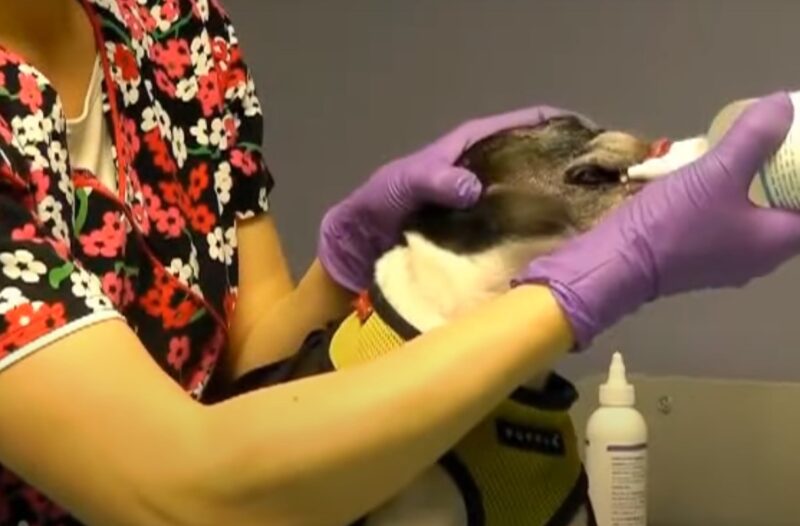
- Why Use Them: These are especially useful if your dog has specific problem areas in its mouth. They can be applied directly, offering immediate relief from bacteria and bad breath.
6. Professional Cleaning
- When to Consider: If you notice excessive tartar buildup or if your dog’s breath becomes particularly foul, it might be time for a professional cleaning.
- What Happens: The vet will use specialized tools to remove tartar, even from below the gum line, ensuring a thorough cleaning.
Diet and Hydration

- Healthy Diet: Just as with humans, a balanced diet plays a pivotal role in dental health. Foods rich in fiber, like crunchy vegetables, can act as natural toothbrushes, scraping away plaque. Carbohydrates, on the other hand, can stick to the teeth and feed bacteria, so they should be given in moderation.
- Hydration: Freshwater plays a dual role. It not only keeps your dog hydrated but also helps wash away food particles and bacteria, reducing the risk of plaque formation.
- Sugary Treats: These are a no-go. Bacteria thrive on sugar, turning it into acid which can erode tooth enamel. Always opt for healthier treatment alternatives.
Advanced Tips for the Tenacious Tartar
Tartar, with its stubborn nature, can sometimes prove challenging to tackle using conventional methods. However, with advancements in canine dental care, there are now more sophisticated tools and techniques at our disposal.
Let’s explore some of these advanced strategies to keep tartar at bay.
1. Tartar-Control Toothpaste
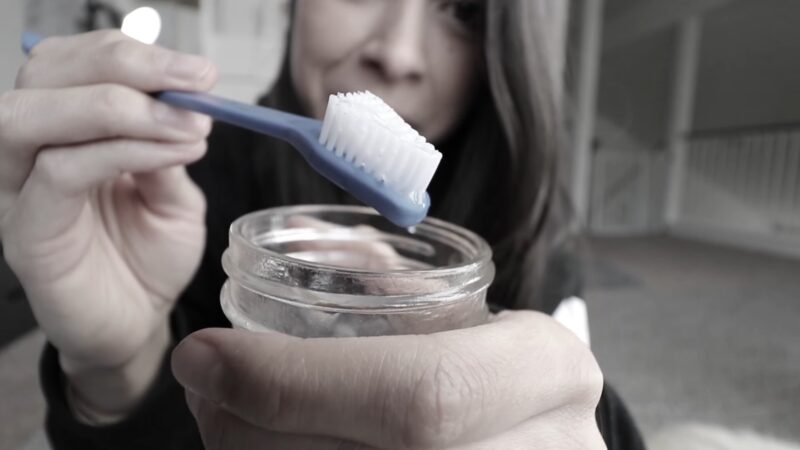
- The Science: These toothpastes are not your regular canine toothpaste. They’re fortified with special enzymes that actively break down the components of plaque, preventing its transformation into tartar.
- Application: Just like regular toothpaste, apply a pea-sized amount to a dog-specific toothbrush and brush in gentle, circular motions. The enzymes work in tandem with the brushing action for optimal results.
2. Water Flossers
- Why Use Them: While brushing is effective, there are areas in the mouth that a brush might not reach. This is where water flossers come in.
- How They Work: Using a jet of water, they can dislodge food particles and bacteria from between teeth and below the gum line, areas often overlooked during regular brushing.
3. Dental Massage
- Benefits: Massaging your dog’s gums not only feels good for them but also stimulates blood flow, which can aid in the removal of plaque. Additionally, it gives you an opportunity to check for any abnormalities or signs of gum disease.
- Technique: Using clean fingers, gently rub your dog’s gums in a circular motion. Be gentle and ensure your dog is comfortable throughout the process.
4. Dental Lasers
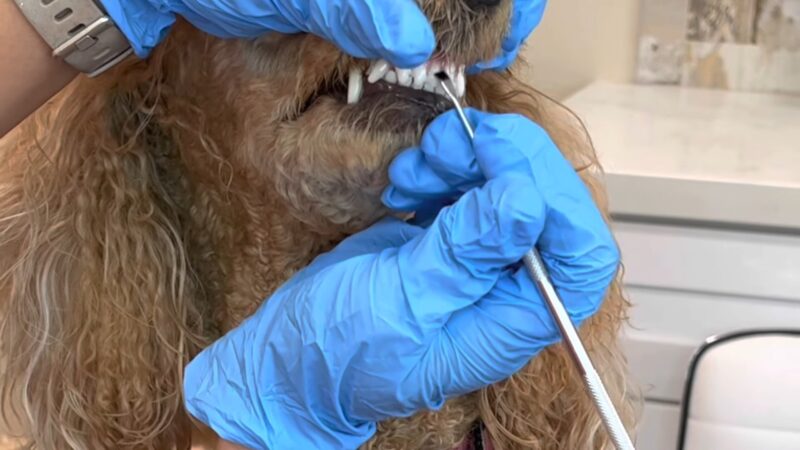
- How It Works: Dental lasers use light energy to target and break down tartar deposits without causing any harm to the surrounding tissues.
- Advantages: It’s a non-invasive procedure, meaning there’s no need for anesthesia. This makes it a safer option for older dogs or those with underlying health conditions.
Seek Expert Advice
Your veterinarian is an invaluable resource when it comes to your dog’s dental health. If you notice persistent bad breath, excessive drooling, or any signs of discomfort, it’s essential to seek their advice.
They can provide guidance tailored to your dog’s specific needs, ensuring that any dental issues are addressed promptly and effectively.
FAQ
Are bones good for tartar removal?
Bones can help knock off tartar when dogs gnaw on them. However, it’s crucial to choose the right size and ensure they are safe for your dog to chew.
How can coconut oil assist in tartar removal?
Coconut oil has antibacterial properties that can fight plaque and tartar. Brushing your dog’s teeth with coconut oil once a day can be beneficial.
What are oral rinses?
Oral rinses, often containing chlorhexidine, kill bacteria and prevent tartar. They coat both the dog’s teeth and gums to prevent plaque and tartar buildup.
Are dental additives useful?
Dental additives can be added to your dog’s water bowl. They act as mouthwash, cleaning the gums and teeth, and are often odorless.
How often should a dog get professional dental cleaning?
Most vets recommend a yearly professional cleaning. If your dog has significant tartar buildup, more frequent visits might be necessary.
Final Words
While tartar might seem like an indomitable enemy, with the right strategies and tools, it’s one we can confidently confront. By incorporating these advanced tips into your dog’s dental care routine, you’re not only safeguarding their oral health but also enhancing their overall quality of life.
Remember, a proactive approach is key. After all, in the battle for our furry friends’ well-being, prevention is our most potent weapon.

